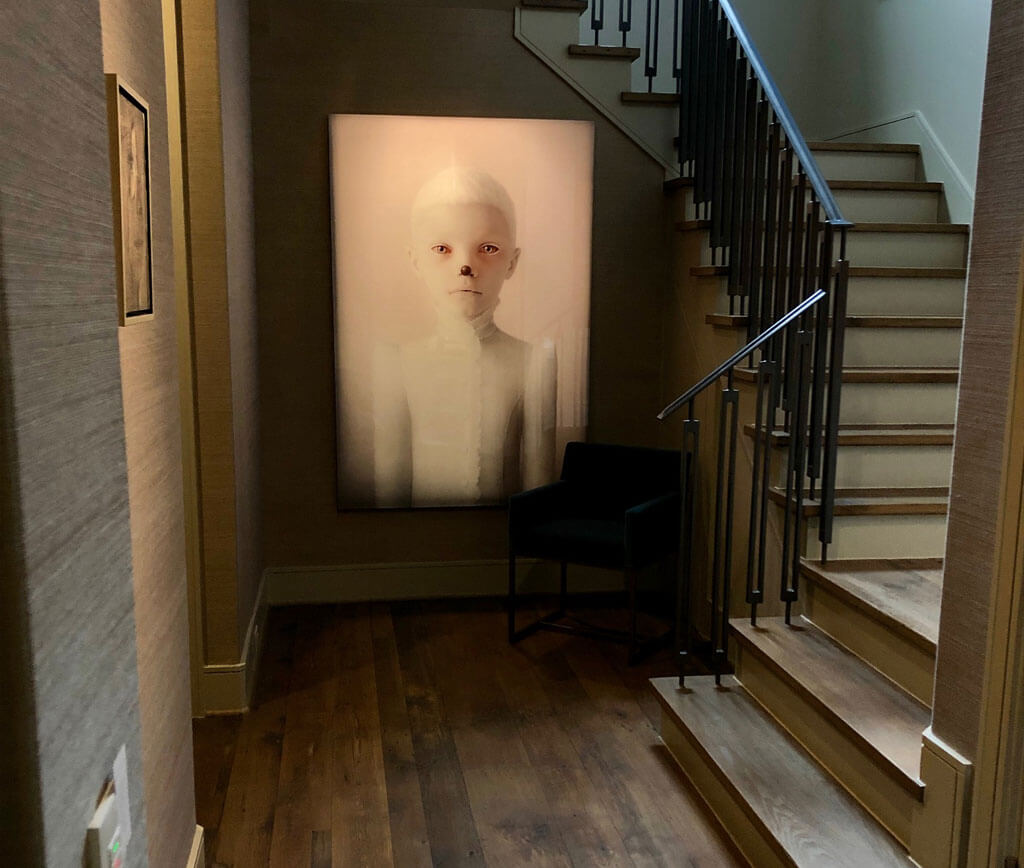Fine Art Lighting Techniques
Your most valuable pieces of art should be highlighted by light, and not damaged. No matter if your collection includes paintings, sculptures and furniture, using proper lighting techniques to enhance the visual experience can extend the life expectancy of these pieces.
Tom Kretzschmar, founder of Phantom Lighting shared these fine art lighting techniques with us to bring your artwork to life. These tips can be used wherever art or precious objects are displayed, such as museums, galleries and restaurants, and at home.

TIP #1 Fine Art Lighting Techniques : Reducing the Light Emitted
This simple truth is obvious: the brighter a lamp emits, it does more harm to artwork. One of the best lighting options for fine art is to choose moderate-to-low-light conditions. For example, reducing the illuminance level from 300 to 30 Lux can increase the lifespan of fine art pieces tenfold in terms of light exposure.
It may be difficult to keep comfortable viewing conditions when there is too much light. To improve your fine art lighting, you can try different lighting contrasts. A fine art piece that is illuminated by a low level of light will be more noticeable in darkened rooms than in brightly lit ones.
Use LEDs to create fine art lighting requires low light levels and strong control. This makes it imperative that dimming abilities are excellent. For example, if a poor-quality driver is used to dim a lamp, it can cause sterboscopic flicker that can adversely affect the art viewing experience.
Fine Art Lighting Techniques Tip #2: Optimize Light Distribution
To showcase fine art, you need a solution that evenly distributes light beams. The distribution of light sources can vary depending on their angle. The spot with the maximum illumination is usually at its center. The center of an artwork is exposed if the illumination level changes by more than 30% along its width. This can lead to 30% greater degradation. This is why it’s important to ensure that the beam quality and uniformity are high.
A large-angle light may send lumens in unwelcome directions. An optic directed toward one part of the body may produce a lot more light than intended, which can increase its illumination. This effect can be mitigated by looking at the beam profile of a light source, as usual specs, like beam angle, don’t give insight into its actual beam shape.
Secondhand glare can cause art viewing to be disrupted by large-angle lighting (for example, reflections off paintings). Museums often conceal light sources from direct glare to prevent them. Large-angle lighting can cause secondhand glare, which reduces visual acuity. Secondhand glare can be eliminated by increasing the illuminance. This causes greater damage to art.
To mitigate the fine art lighting problems, use directional luminaires that have high-quality beam profile, low spillage and glare, and no hot spots. While glare-reducing shades or louvers may reduce light spillage, it is important to remember that these can cause too much of a cut in the beam profile which can degrade the aesthetic.
Fine Art Lighting Techniques Tip #3: Avoid Non-Visible Radiation
Artwork damage is also affected by the light spectrum. Short-wavelength photons are more damaging to precious items than long-wavelength ones. The specific wavelength sensitivities of different paints and materials will affect their sensitivity.
It is best to avoid non-visible radiation such as ultraviolet radiation. This radiation can damage artwork but not enhance it. The best lighting solution for fine art is provided by modern LEDs, which emit very little UV radiation and infrared. For example, Phantom Lighting LED lamps emit around 100 times as much UV radiation as halogen lamps.
A full-spectrum high-CRI LED can accurately reproduce colors, much like sunlight. However, it will produce less UV radiation and cause more damage than sunlight. For a given illumination, full-spectrum LEDs can cause slightly more damage than low-CRI LEDs. This is because the additional radiation causes 20-30% greater damage. You may need to decide what is more important: precise color rendering with more damage or stronger color rendering with less damage. To maintain damage levels, reduce the illuminance to 20-30% if you want stronger color rendering.
According to scientific studies, our eyes are sensitive to changes in color but not to the light level. When evaluating lighting options for fine art, it is wise to choose a higher illuminance color. LED art light is a great choice.
Find out more about Fine Art Lighting Techniques
Be aware of the following factors when evaluating fine art lighting techniques: Illuminance, beam quality, and non-visible radiation. The Phantom Lighting LEDs, directional luminaires, and other directional lighting products are available to museums, galleries and restaurants, as well as fine art collectors, to help bring any masterpiece to life, including pieces by all of the world’s greatest artists.
Phantom’s contour projectors bring out the beauty in any piece of art, without the harmful effects of ultraviolet radiation that is commonly caused by sunlight and halogen lamps.
Are you interested in learning more about Fine Art Lighting Techniques for art enhancement? Contact Phantom Lighting Systems to learn more.
